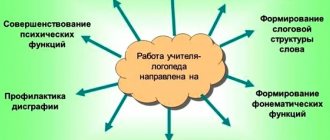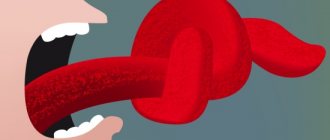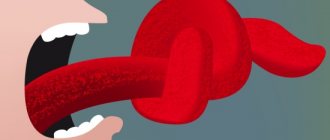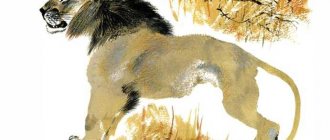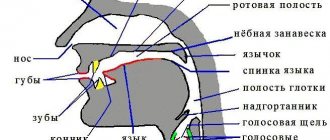Phallus indusiatus "Lady with a Veil".
0
Phallus indusiatus belongs to the Veselkov family. An unusual feature of this mushroom is the presence of a lace “veil” entangling the fruiting body of this “lady”. The mushroom cap is covered with a green-brown mucus that attracts insects. They take an active part in spreading spores. Phallus indusiatus is found in South Asia, Africa, Australia and the Americas. The mushroom is edible and is quite widely used in the preparation of various dishes in China.
Rules for cutting and twisting fruits
To preserve the positive qualities of the product, every mushroom picker must remember the rules for collecting mushrooms. It all depends on the type of mushroom, its habitat and growth characteristics. There are rules for collecting edible mushrooms using the twisting method.
- Boletus, boletus, and boletus usually have a thick stem. In order not to leave part of the stem in the ground, the fruiting body is twisted, gradually loosening and twisting. After tearing it out, the place where it grew is carefully covered with earth or leaves, thanks to which a new crop will soon appear in this area.
- If you encounter a suspicious mushroom on the way, it is better to unscrew it, but put it separately from the others. Upon returning home, its type is determined with the help of an encyclopedia or knowledgeable people.
- During collection, it is advisable to twist out single mushrooms. If mushrooms grow in groups, they are cut off.
Cutting method
It is important to cut mushrooms correctly
Basic rules for collecting mushrooms require knowledge of the cutting method.
- According to the harvesting rules, only lamellar mushrooms are cut: milk mushrooms, saffron milk caps, and capillaries. It will be difficult to unscrew them, because... these species have fragile legs and caps.
- Mushrooms that show slight signs of worminess are cut off, after which they are carefully inspected with a knife. If the fears are confirmed, the fruiting body is placed (or pricked) on the branches to dry. The spores will have time to ripen and scatter to nearby territories. For the same purpose, it can be pinned onto a branch with the cap down. This way, the mushroom picker will not only increase the yield in the forest, but also provide food for the animals.
- Species that grow in groups must be cut with a knife, since it will be difficult to unscrew each mushroom and this can damage the mycelium.
- If the mushroom grows in moss, use a knife and cut it off. After a while, the remaining leg will rot.
- It is advisable to cut off the fruiting bodies of mushrooms growing on trees with a knife, because they have hard legs. After a short time, a new crop will appear in the same place.
The rules for collecting mushrooms indicate that picking them is prohibited. If a person does this, he will damage the mycelium, which will take a long time to recover or will not do so at all.
Schizophyllum commune
0
One of the most widespread mushrooms in the world, it is found on every continent except Antarctica (where there is simply no wood to use as a substrate). Despite the fact that European and American sources classify it as an inedible mushroom, it is not poisonous, although it is of little culinary interest due to its toughness. The common gorse is actually edible and is widely eaten in Mexico and other tropical countries.
Riddles about mushrooms
For example, you can offer the following poems and riddles:
My hat -
Where the needles are.
Glistens in the sun
It slips in your hands. (oiler)
With a thick leg, small,
He hid in the moss... (boletus).
If I get into the basket -
You will have a supply for the winter.
I taste very good!
Did you guess it? This is... (milk).
They lead a friendly round dance
Red sisters.
Everyone will immediately understand:
In front of him... (chanterelles).
Sits bravely on a stump
A bunch of brave guys.
Everyone can easily recognize them:
Who doesn’t know about….(again)?
All shades and colors
Those mushrooms have caps.
Collect them without haste,
Very fragile...(russula).
Look at the video riddles about mushrooms:
As a conclusion to the lesson, to include motor memory in the work, in the final part we invite the kids to work with coloring. The mushroom coloring page puts kids in a calm mood.
Clathrus ruber Red trellis.
0
A very rare (naturally small in number) mushroom. Listed in the Red Book. At the beginning of its life, the fruiting body of the red trellis looks like a white egg, and has a thin membrane hiding a compressed lattice “sphere”. And when the mushroom grows, the fruiting body breaks through this membrane and begins to expand. Sometimes the mushroom reaches 20 cm in length. The mushroom is edible as long as it resembles an egg, and is even considered a delicacy in some parts of Europe and Asia, where the mushroom is pickled and sold as "devil's eggs." However, when the mushroom matures, it can be hazardous to health.
Basic collection rules
Picking mushrooms in the forest is not easy; you must follow a few basic rules:
- It is forbidden to pick unknown mushrooms;
- an unknown mushroom cannot be tasted;
- before going into the forest, it is worth studying edible species (for these purposes, you can either visit special Internet resources, or atlases and reference books with photos);
- It is advisable to go hiking early in the morning, when there is dew on the grass;
- It is advisable to place the collected mushrooms in a special basket made of vine (another natural material, but retaining its shape), the pulp will be less damaged;
- You cannot go far into the forest and leave children unattended;
- Do not collect spoiled or overripe mushrooms;
- They go on hikes in groups and always have means of communication with them; with the onset of evening time they return home;
- take a first aid kit with you;
- When searching for mushrooms, leaves on the ground are picked up with a stick rather than with your hands: the foliage often contains a dead animal or a poisonous plant or a poisonous animal.
Irina Selyutina (Biologist):
I would like to name a few more points, the implementation of which will not burden you, but will preserve your nerves and health:
- Do not pick mushrooms along highways, industrial zones, near burial sites, warehouses, etc.
- Don't leave children unattended, dress them in bright clothes so they can see against the greenery.
- Explain to children that they cannot put anything in their mouth - neither berries nor mushrooms.
- Do not use plastic bags or bags - the mushrooms will become wrinkled.
- Inspect the mushroom before putting it in the basket.
- Don’t look for mushrooms in tall grass or windbreaks (well, unless you feel like doing something heroic).
- Clean the collected mushrooms from soil and debris on site.
- Don't take more mushrooms than you can carry.
- Don't collect baby mushrooms.
You should not pick mushrooms with obvious signs of rot and old age, as they can be harmful to your health. At home, the harvested crop is immediately sorted, washed, peeled, frozen or canned. Raw mushrooms do not last long. If you follow the rules for picking mushrooms, going to the forest will be useful and pleasant.
And finally, about the pale grebe: do not trample the pale grebe, if you find it - just pass by. And do not touch anything near it - flowers, berries or mushrooms. Nearby is approximately 1.5-2 m from the place where the mushroom grows. Why? Most likely, all these beauties and delicacies are already covered with microscopic spores and have become dangerous to life and health. If you trample it, then most likely (100%) you will bring a poisonous “gift” from the forest in the form of spores home.
Mushroom picker signs
Many mushroom pickers pay attention to signs and signs before picking:
- If mushroom pickers go into the forest during a leap year, the forest spirit will begin to take revenge on them.
- There is a superstition that once every 2-3 years the mycelium becomes poisonous and therefore mushrooms cannot be collected. Perhaps in this way our ancestors wanted to give the mycelium a rest and restore its “strength”.
The forest needs annual restoration, so many mushroom pickers change their “golden” places to new ones every year, and during a leap year they take a vacation for the sake of safety. Proper collection is a real art.
gathering rules
gathering rules
gathering rules
gathering rules
skillful mushroom picking is the norm for a mushroom picker
✎ Why are there rules for collecting mushrooms?
When going on a “quiet hunt”, you need to remember well and conscientiously follow the rules of mushroom picking , and also adhere to the rules of behavior in the forest and the basic culture of communication with wildlife. Because this is simply necessary to conserve mushroom reserves and preserve the forest, as the most important source of supporting life on our planet. A significant proportion of our mushroom harvests are collected individually and, as a rule, for personal use. Mostly the rural population is engaged in collecting mushrooms and, to a lesser extent, the urban population is accustomed to this. Mushroom picking begins in early spring and continues until late autumn, with a short break in the first half of June. But mushrooms do not grow everywhere where there is a forest; the main condition for their growth is warm weather without sharp fluctuations in day and night temperatures and sufficient humidity. In damp or, conversely, too dry soil, they do not grow at all or grow only very poorly. To successfully collect forest mushrooms, you need experience, knowledge, and skill. It is not uncommon to observe how, having gone on a “quiet hunt” in the same area, one mushroom picker returns with a full basket, another with only its “covered bottom”; the first brings selected, first-class “trophies”, and the second brings little demand. Of course, this has little to do with the rules of mushroom picking; most likely, this is the result of many years of personal experience or knowledge of the various intricacies of mushroom picking. But you still need to know these rules.
✎ What are these rules for collecting mushrooms?
These rules are very simple. And it won’t be too difficult to read them carefully and remember them well:
I. The golden rule of mushroom picking
:
- collect only familiar mushrooms,
any unfamiliar ones that raise even the slightest doubt, or with obvious tuberous thickenings at the base of the legs, do not take them, do not touch them with your hands, do not try to taste them, and, moreover, do not eat them (this is the rule);
II. The main rule of mushroom picking
:
- collect young “healthy” mushrooms,
and under no circumstances should you take wormy, overgrown, flabby, or worse, rotten ones (which themselves accumulate dangerous toxic substances), without exposing your taste to trouble, and your health to an unnecessary test (this is the rule);
III. An important rule for picking mushrooms
:
- When picking mushrooms, do not damage the mycelium,
so that it can produce new harvests in subsequent years; To do this, it is better to simply twist the tubular types of mushrooms out of it, and cut or break the lamellar and marsupial types (this is the rule);
IV. The first rule of mushroom picking
:
- Having found a mushroom, look around, its “brothers” grow nearby,
because almost all types of mushrooms like to live either in small friendly families or in impressive colonies (this is the rule);
V. The second rule of mushroom picking
:
- do not look for mushrooms in tall grass and windbreaks,
This is wasted energy, nerves and time, and at best it’s two mushrooms per hour (this is the rule).
VI. The third rule of mushroom picking
:
- collect mushrooms in a ventilated basket,
because in any bucket (plastic or metal) or plastic bag, they suffocate and “burn out” very quickly (this is the rule);
VII. The fourth rule of mushroom picking
:
- clean the obtained “trophies” from soil and debris,
and lay with the caps down or sideways, in this case: tubular types together with the stem; and in lamellar species, the legs should be cut to a length of 2–3 centimeters (this is the rule);
VIII. The fifth rule of mushroom picking
:
- do not take more mushrooms than you need (than you can carry),
because the collected “trophies” deteriorate very quickly and lose all their qualities, so they must be processed immediately upon returning from the forest (this is the rule);
IX. The first rule of “good manners” when picking mushrooms
:
- When collecting, do not take “baby mushrooms”,
They won’t add much to the basket anyway, but in a day or two they will grow up and be able to please another mushroom picker or some forest dweller (this is the rule);
X. The second rule of “good manners” when picking mushrooms
:
- Do not trample any old mushroom,
edible hang higher on a branch with the spore-bearing layer down, the wind will carry its spores for the future harvest (this is the rule);
XI. The third rule of “good manners” when picking mushrooms
:
- do not knock over any unfamiliar mushroom,
and leave it to a more experienced tracker or forest dweller, it is quite possible that they will find it useful (this is the rule);
✎ How to pick mushrooms correctly?
To collect mushrooms, you need to have a basket that is well ventilated, maintaining the freshness of the collected mushrooms throughout their collection. And the basket should, if possible, be low and wide; in a high and narrow basket they get wrinkled, and it’s difficult to remove them from there. You should not use very soft containers for collecting mushrooms, as they will also wrinkle, break, crumble and deteriorate prematurely. It is also not recommended to use plastic bags, plastic, metal buckets and pails. The “trophies” obtained in them will suffocate and quickly become unusable. Therefore, you can only use a wicker (and preferably willow) basket. And the harvested crop should be placed in it with the caps down (or sideways), cutting off with a knife the part of the stem that is contaminated with the remains of soil and debris from the mycelium. The best time to collect forest mushrooms is the early morning hours, because mushrooms (which, as a rule, grow mainly at night), collected in the morning, will be fresh and dense, and therefore resistant to transportation and subsequent storage. And the technique of collecting mushrooms itself requires rational techniques that should protect the mycelium from damage, ensuring mushroom harvests for subsequent years. And it is unacceptable, for example, to pull mushroom fruits out of the soil, since this significantly damages the mycelium and its subsequent growth in this place often stops. It is recommended to cut off the stem of the fetus with a knife, but the truth is that this always results in an open lacerated wound, which easily absorbs any infection and may well cause the mycelium to rot. The mycelium is least damaged if the mushroom is twisted out of it. To do this, it must be rotated around its axis until it freely separates from the mycelium. And the hole that remains after this should be lightly buried or lightly trampled.



